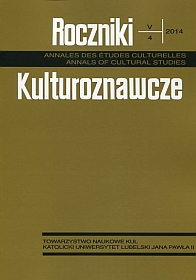Where Is the Holy Land?
Abstract
The Holy Land, the area considered to be Terra Sancta for Jews, Christians and Muslims, is very well known, but its exact limits are not fixed as everybody has his or her definition of that special area. The Holy Land is an imagined area and its map are mental map, established according the beliefs of those who deals with it. The Uniqueness of the Holy Land is one hand— its holiness for three religions, and, on the other hand, we deals not only with a list of holy places, which is common everywhere, but with the whole area in which those holy places are located. Even though, The Jewish tradition can present three different limits, the Christian one is not precise and the Muslim's view is nearly not known. As such, the modern boundaries of Israel and Palestine are not the boundaries of the Holy Land, although those, which made a pilgrimage to this holy area, visit these modern countries, with the view that they visit the Holy Land.
References
Baker, Alan R.H., John D. Hamshere, and John Langton (eds.). Geographical Interpretation of Historical Sources. London: Barnes and Noble, 1975.
Biger, Gideon. The Boundaries of Modern Palestine, 1840-1947. London: Routledge, 2004.
Casey, Edward S. The Fate of Place: A Philosophical History. Berkeley: University of California Press, 1997.
Clarke, Katherine. Between Geography and History: Hellenistic Constructions of the Roman World. Oxford: Oxford University Press, 1999.
Davies, William D. The Gospel and the Land: Early Christianity and Jewish Territorial Doctrine. Berkeley: California University Press, 1974.
Haggett, Peter. Geography: A Modern Synthesis. London: Heinemann, 1975.
Halbwachs, Maurice. The Collective Memory, trans. from the French by Francis J. Ditter Jr. and Vida Yazdi. New York: Harper & Row, 1980.
Kitchin, Rob, and Mark Blades. The Cognition of Geographic Space. London: I. B. Tauris & Co Ltd., 2002.
Kong, Lily. “Geography and Religion: Trends and Prospects.” Progress in Human Geography, 14 (3) (1990): 355-371.
Kong, Lily. “Religious Geography.” In: James Duncan and Nuala C. Johnson (eds.). A Companion to cultural geography. Oxford: Blackwell Publishing, 2004.
Le Strange, Guy. Palestine under the Moslems: A Description of Syria and Holy Land from 650 A.D. to 1500 A.D. New York, NY: Cosimo Classics, 2010. First published in 1890.
Portugali, Juval. The Construction of Cognitive Maps. Dordrecht: Kluwer Academic Publishing, 1996.
Shweid, Eliezer. The Land of Israel. National Homeland of Land of Destiny. London and Toronto: Farleigh Dickson University Press, 1985.
Sopher, David E. Geography of Religion. Englewood Cliffs, NJ: Prentice-Hall, 1967.
Tuan, Yi-Fu. Topophilia: A Study of Environmental-Perception Attitudes and Values. Englewood Cliffs, NJ: Prentice-Hall, 1974.
Walker, Peter I. Christian Attitudes to Jerusalem and the Holy Places in the Fourth Century. Oxford: Oxford University Press, 1990.





